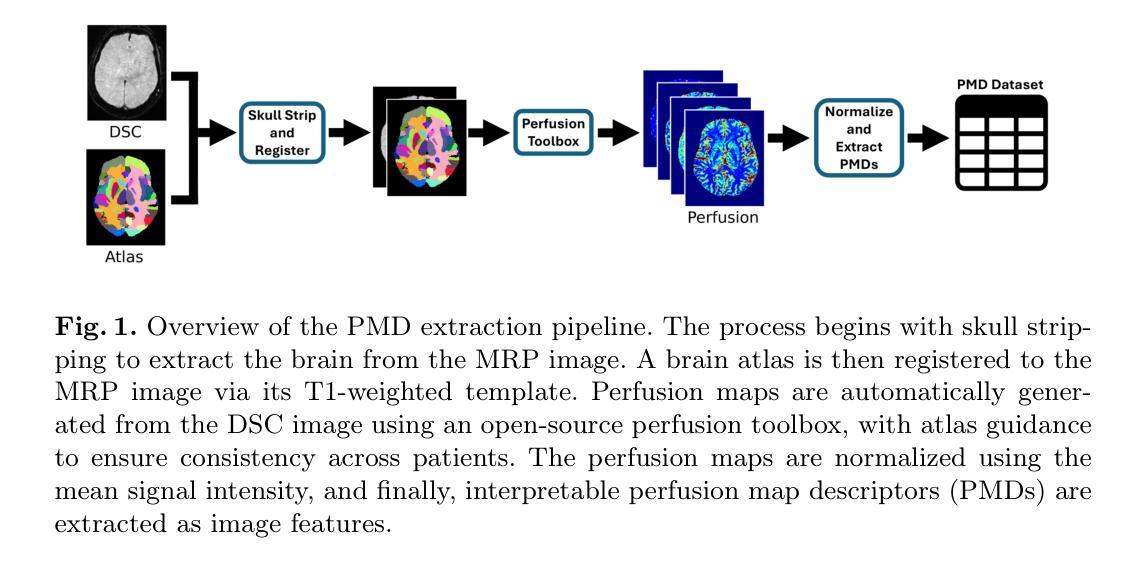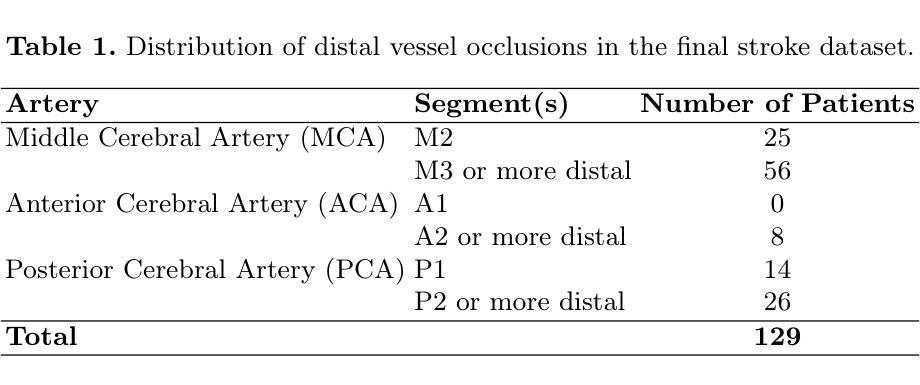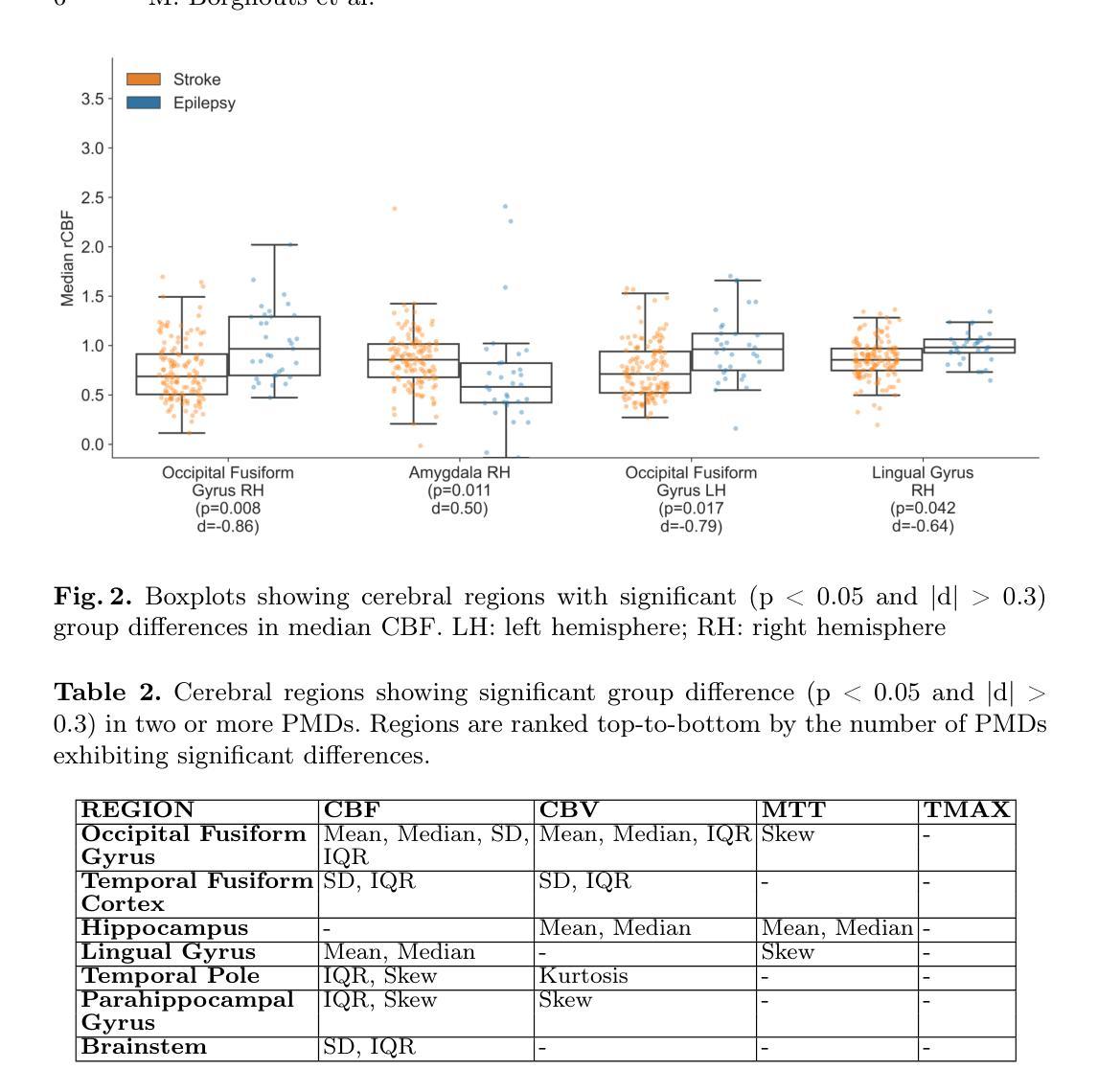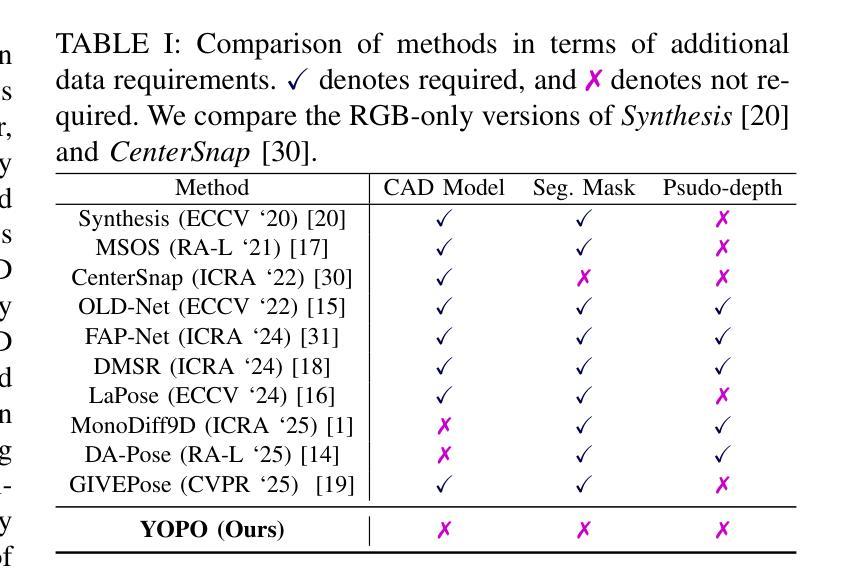⚠️ 以下所有内容总结都来自于 大语言模型的能力,如有错误,仅供参考,谨慎使用
🔴 请注意:千万不要用于严肃的学术场景,只能用于论文阅读前的初筛!
💗 如果您觉得我们的项目对您有帮助 ChatPaperFree ,还请您给我们一些鼓励!⭐️ HuggingFace免费体验
2025-08-23 更新
Discriminating Distal Ischemic Stroke from Seizure-Induced Stroke Mimics Using Dynamic Susceptibility Contrast MRI
Authors:Marijn Borghouts, Richard McKinley, Manuel Köstner, Josien Pluim, Roland Wiest, Ruisheng Su
Distinguishing acute ischemic strokes (AIS) from stroke mimics (SMs), particularly in cases involving medium and small vessel occlusions, remains a significant diagnostic challenge. While computed tomography (CT) based protocols are commonly used in emergency settings, their sensitivity for detecting distal occlusions is limited. This study explores the potential of magnetic resonance perfusion (MRP) imaging as a tool for differentiating distal AIS from epileptic seizures, a prevalent SM. Using a retrospective dataset of 162 patients (129 AIS, 33 seizures), we extracted region-wise perfusion map descriptors (PMDs) from dynamic susceptibility contrast (DSC) images. Statistical analyses identified several brain regions, located mainly in the temporal and occipital lobe, exhibiting significant group differences in certain PMDs. Hemispheric asymmetry analyses further highlighted these regions as discriminative. A logistic regression model trained on PMDs achieved an area under the receiver operating characteristic (AUROC) curve of 0.90, and an area under the precision recall curve (AUPRC) of 0.74, with a specificity of 92% and a sensitivity of 73%, suggesting strong performance in distinguishing distal AIS from seizures. These findings support further exploration of MRP-based PMDs as interpretable features for distinguishing true strokes from various mimics. The code is openly available at our GitHub https://github.com/Marijn311/PMD_extraction_and_analysis{github.com/Marijn311/PMD\_extraction\_and\_analysis
急性缺血性中风(AIS)与中风模仿者(SMs)之间的区别,特别是在涉及中小血管闭塞的情况下,仍然是一个重要的诊断挑战。虽然基于计算机断层扫描(CT)的协议在紧急情况下常用,但它们在检测远端闭塞方面的敏感性有限。本研究探讨了磁共振灌注(MRP)成像在区分远端AIS与常见的模拟疾病癫痫发作中的潜力。我们回顾了包含162名患者(其中129名患者是AIS患者,有癫痫发作病史的为33人)的数据集,从动态易感性对比图像中提取了区域灌注图描述符(PMDs)。统计分析确定了某些PMDs在主要位于颞叶和枕叶的脑区域中存在显著差异。半球不对称性分析进一步强调了这些区域具有辨别能力。基于PMD训练的逻辑回归模型在接收特性曲线下的面积(AUROC)达到了0.90,在精确度召回曲线下的面积(AUPRC)达到了0.74,特异性为92%,敏感性为73%,这表明其在区分远端AIS与癫痫发作方面具有出色的表现。这些发现支持进一步探索基于MRP的PMD作为区分真实中风与各种模仿疾病的可解释特征。代码已在我们GitHub上公开发布:链接。
论文及项目相关链接
PDF Accepted to SWITCH2025
Summary
本文探讨了利用磁共振灌注(MRP)成像技术区分急性缺血性中风(AIS)与常见的中风模仿者(SM,如癫痫症发作)的潜力,特别是在区分远端AIS与癫痫时。通过对动态磁敏感对比(DSC)图像的区域性灌注映射描述符(PMDs)进行统计分析,研究发现某些大脑区域在PMDs上有显著差异,主要位于颞叶和枕叶。使用PMDs训练的逻辑回归模型表现出较高的诊断性能,支持进一步探索使用MRP-based PMDs作为区分真实中风与各种模仿者的可解释特征。
Key Takeaways
- 急性缺血性中风(AIS)与中风模仿者(SM)之间的诊断存在挑战,尤其是在中小血管闭塞的情况下。
- 计算机断层扫描(CT)在紧急情况下对远端闭塞的检测敏感度有限。
- 磁共振灌注(MRP)成像技术具有区分远端AIS与癫痫症发作的潜力。
- 通过动态磁敏感对比(DSC)图像提取的PMDs在大脑某些区域存在显著差异,特别是在颞叶和枕叶。
- 利用PMDs的逻辑回归模型在区分AIS与癫痫时表现出良好的诊断性能,具有高的AUROC和AUPRC值。
- 该研究提供的代码公开可用,为进一步探索和研究提供了基础。
点此查看论文截图





